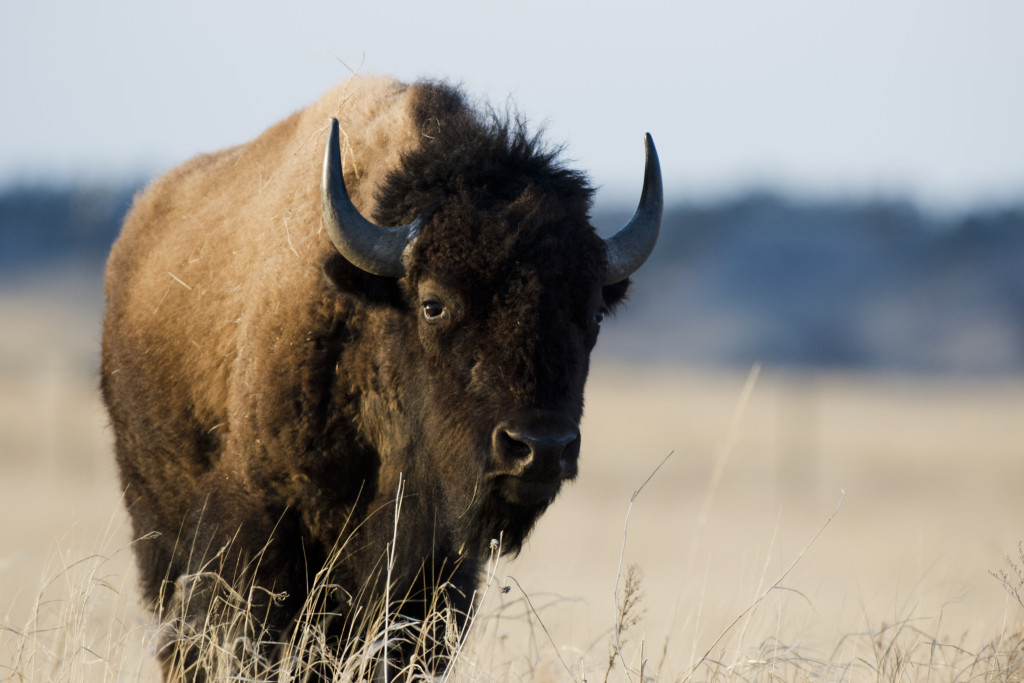
By Amber Schiltz, Education Assistant Division Administrator
Communication is how living creatures, including humans and other animals, share information. As humans, we share information with one another in many obvious ways, such as talking, texting or writing. We also communicate through less obvious ways, through music, body language, signals, pictures, other artwork and more.
As social creatures, communication is one of our strong suites as a species. But did you know that other animals can be just as communicative? They just have their own ways of doing it.
Whether an animal is looking to find the right mate, to care for its young, to help another find food or warn of predators, communication is key to an animal’s survival. Although animals may not harness the power of language in the way we’re familiar with, many animals use different senses to “talk” to one another in creative and surprising ways.
Hear
Auditory communication is communication through sound, when information is sent through sound waves that the receiving animal needs to hear to understand. Does this sound familiar? When humans talk to one another, we’re using auditory communication. Sound is one of the most common communication modes in the animal world.
Think of the last time you might have walked through a forest, a prairie or a park and heard the background noises of nature: a woodpecker drumming on a tree, frogs croaking, crickets chirping, maybe even a deer snorting. The sounds you hear are messages being shared by animals all around. A woodpecker drilling on wood could be calling for a mate. A frog might croak to warn others to stay off its territory. Crickets chirp to look for friends. A white-tailed deer will snort to warn others that danger is near.
Sight
Visual communication is communication through sight, when information is sent through color or movement that others need to see to understand. If you’ve ever written a note to a friend, you’ve visually communicated. Whatever your message was, your friend had to use their eyes to understand it.
In the animal world, examples of visual communication are brightly colored frogs and insects. As a defense, a brightly colored frog warns predators that its poisonous to eat. Male fireflies use their flashing abdomens to call out for mates during warm summer nights.
Visual communication can also be sent through gestures and movement — the stomping of a bison warning another animal that it’s too close, or the wagging of a dog’s tail communicating its excitement to be near you.
Smell
Olfactory communication is communication through smell, when information is sent through chemical signals or scents. The receiving animals need to smell to understand these messages. Although not as familiar to us, leaving smelly messages is one of the oldest forms of communicating in the animal world. What kind of messages are being smelled in nature?
Minnows swimming in a creek avoid predatory fish by smelling their scent in the water. Ants that find a tasty food source will leave an invisible scent trail on the ground to lead other ants to the food. Many mammals, such as weasels and foxes, will rub oil glands found in their skin onto rocks or trees where they live, leaving a scent that warns others of their space.
Touch
Tactile communication is communication through touch. This kind of communication is most often used among social animals. The receiving animals need to be able to feel to understand these messages. For example, baby mammals will seek warmth and milk from their mothers by cuddling them. Some mammals, such as monkeys, will build friendships that help them survive by grooming one another. If you’ve ever given a hug to a friend, you’ve used tactile communication. What message do you think you were sharing in that hug?
These are just a few examples of the many ways animals communicate. Whether they are singing, flashing bright colors, wagging tails, sending smelly signals or cuddling, animals “talk” to each other just as much as humans do, just often in a less familiar language. Next time you’re in nature, pay attention to the sounds around you, the colors or behaviors of creatures you might see and even the smells in the air. You might be picking up a secret message sent by the natural world.
